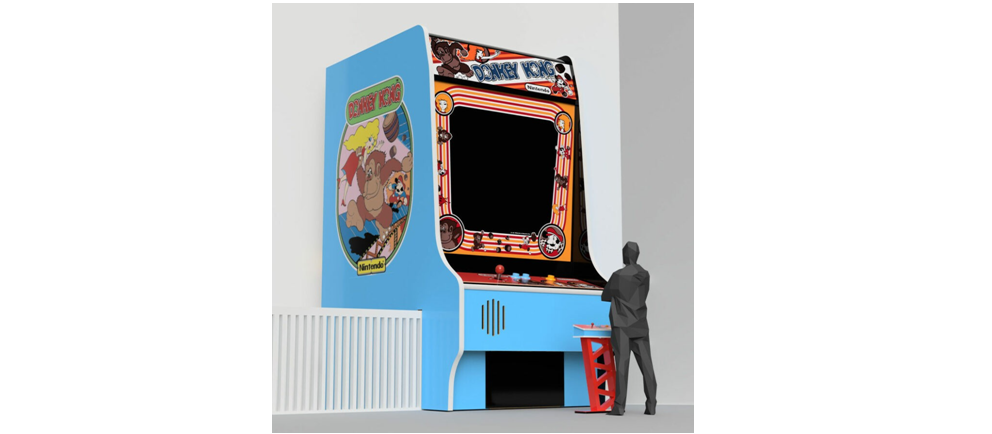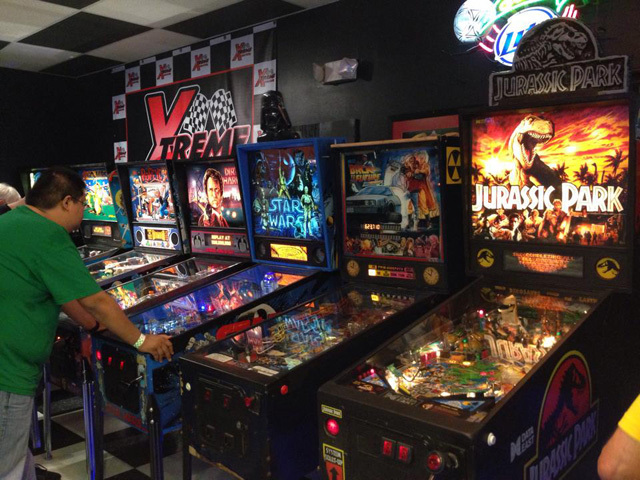Yeah, yeah; we know. Tetris is on every platform under the sun, but bear with us just this time. Tetris was originally designed and developed by Russian AI researcher Alexey Pajitnov in 1984 as a method for testing the AI of the times. Pajitnov created this simple game in order to test the skill of his machines. However, the game became so famous among his colleagues, that they ported it to the IBM PC, which started the game’s snowball into both history and culture.
Now, Tetris is like the Mickey Mouse of gaming. Even if you don’t know who Pajitnov is, you will most certainly know about this game. Throughout its lifetime, the game about stacking blocks has become the most sold piece of gaming software in history, dwarfing even Minecraft’s sales. In total, Tetris has sold over 500 million copies across all its versions and iterations, though some would argue against counting certain versions in the grand total. Regardless, this simple-yet-popular piece of software has sold tons of copies.
Various Arcade versions of the concept have made their way to the market, originally being handled by Atari Games for the West, and Sega for the East. Other official variations have been created by an array of different companies, with Tetris: The Grand Master series culminating in the most “hardcore” display of block dropping madness ever witnesses.
Last week, we wrote about how this game had made its foray into the battle royale genre in the form of Tetris 99. The game is included as free downloadable content for the Switch as a part of the Nintendo Online subscription. It includes the same gameplay as you’d expect from ol’ Tetris, but with certain PvP elements added in the form of obstacles that you can unleash on your opponent’s boards when completing lines.

The original Tetris created for PC-DOS
In short, while considered a pastime by many, Tetris is still very much alive in terms of audience and competitive scene. With that being said, we took it upon ourselves to create this guide where you can learn the basics of the game. However, if you want to pick up some strategies to improve your gameplay, then stay tuned for part two!
The Basics
Speaking about the “basics” of a game like Tetris is like watering your plants in the rain. You really can’t get much simpler than playing Tetris. However, this is one of those games that’s easy to pick up, yet difficult to truly master, which adds to its widespread appeal across multiple audiences. Tetris is just a really fun way to pass the time, regardless of your preferences.
The objective of the game is to control the “tetriminoes” that fall from the top of the screen, and make them sit at the bottom without leaving any gaps. As you stack and organize the pieces, you will slowly fill the rows and columns of the board. When you complete an entire row, the line will disappear and the player will receive points according to the number of lines erased on that move. However, if the player makes too many mistakes, and the screen fills with pieces to the top, then the game is over.

The maximum number of lines that a player can complete in a given move is 4 (since the longest tetrimino is a straight vertical line 4 tiles in height). When a player achieves this, it’s called a tetris and grants the most amount of points.
The amount of points that a player receives per combo is the following:
- 1 line—50 points
- 2 lines—150 points
- 3 lines—400 points
- Tetris—900 points
As you can see, while keeping the board empty and preventing it from spilling over the top is a good way to extend your playtime, the objective is to line up the pieces in order to set up for a tetris and grab as much points as you can. Luckily, the game has several tools that might assist you in this endeavor:
- Next Piece: In most versions of the game, you can see what your next piece after placing the current one down will be. In fact, some versions allow you to view up to two pieces in advance. In this sense, you can plan out your piece placement in order to accommodate for the next tetrimino, and set up line combinations in subsequent moves.
- Ghost Piece: This is a feature present in the newer versions of the game and allows you to view an outline of where current piece will fall. It’s great for when your board is mostly empty and you need to see an accurate representation of where you’re aiming at any given time.
- Hold Piece: Like the the feature above, hold piece is a recent addition to the newer versions of the game. As its name implies, this feature allows you to hold the current falling piece for use at a later moment. When you deploy a held piece, it is immediately swapped out for the current one, which you must place on the board before being able to hold another one.
Pieces
Since the pieces are tetriminoes, which are figures comprised of four squares each, there are seven different possible combinations in which they spawn. These pieces are referred as letter due to their characteristic shape, and consist of the following units:

- O Piece: Consists of a 2×2 square which cannot be rotated.
- I Piece: It’s a vertical line 4 tiles in height. It can also be set on its side so that it occupies 4 horizontal tiles.
- L Piece: A piece that is four tiles wide, with a square on top of the right-most tile, giving it the shape of a letter L lying on its side.
- J Piece: It’s a mirror image of the previous piece, with its single block occuring on the leftmost tile instead of the right one.
- S Piece: While versatile, this piece is a bit tricky to use. It consists of two horizontal lines two tiles in length stacked on top of each other, with the upper line one square off-center to the right, giving the impression of a letter S.
- Z Piece: The mirror image of the previous piece, but with the top line off center one square to the left, resembling a letter Z.
- T Piece: One of the most useful pieces to be found. It consists of a straight horizontal line 3 tiles in length with a single tile jutting up from the center square of the bottom line. The shape resembles an upside-down T.
This is all you need to know to get started with Tetris. Like with many other arcade games, most of your skill in this game will come through practice and dedication. However, there are several strategies that you can incorporate into your gameplay to improve your scores and help you to survive for longer in each game. If you want to learn some more about getting good at Tetris, then stick around for part two!





